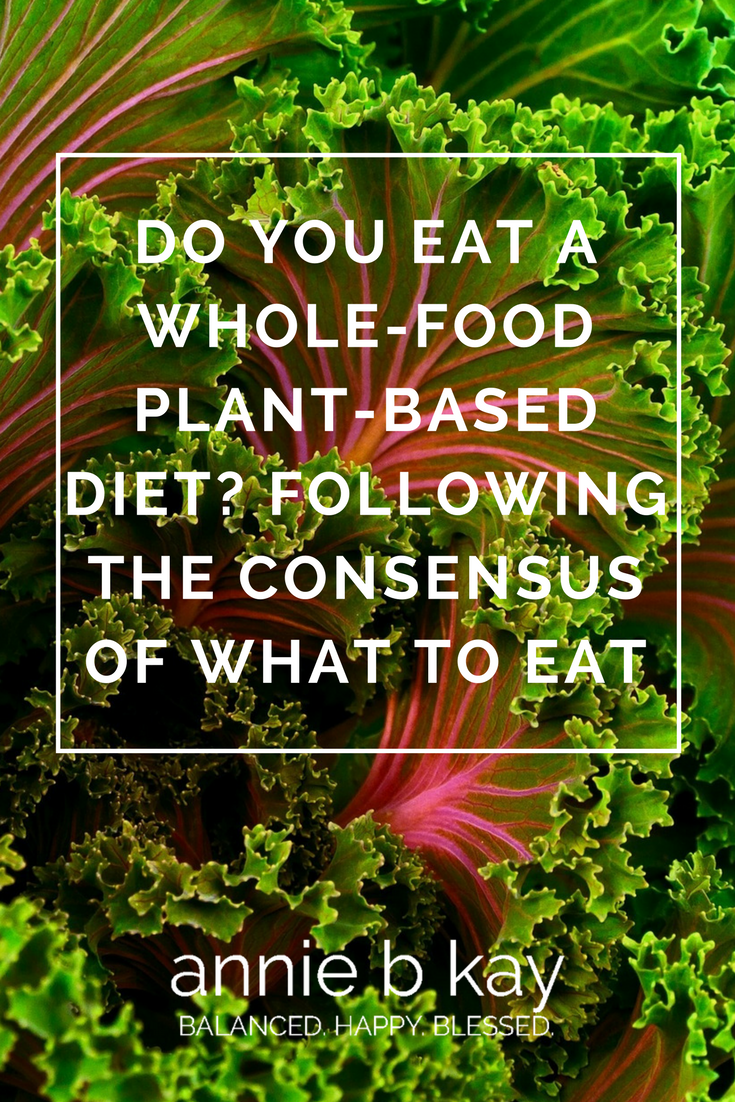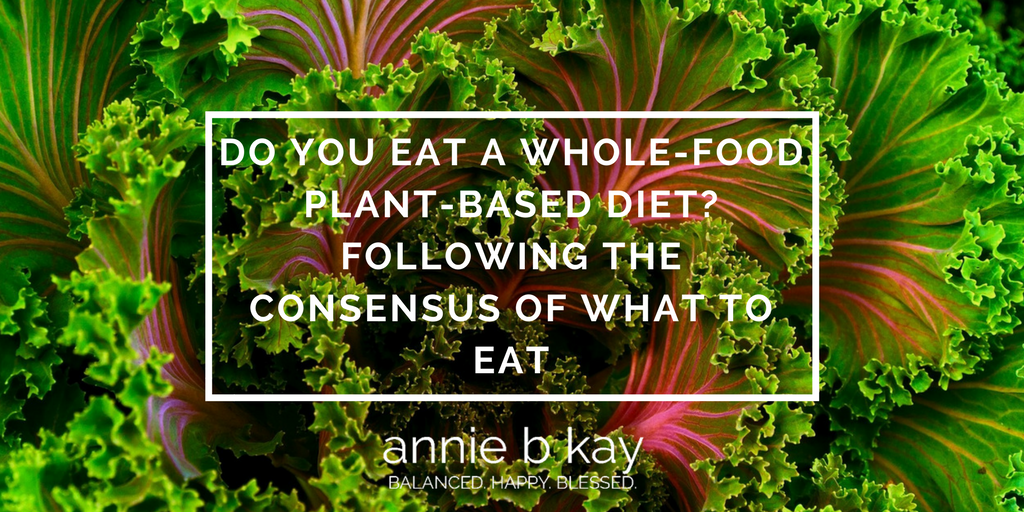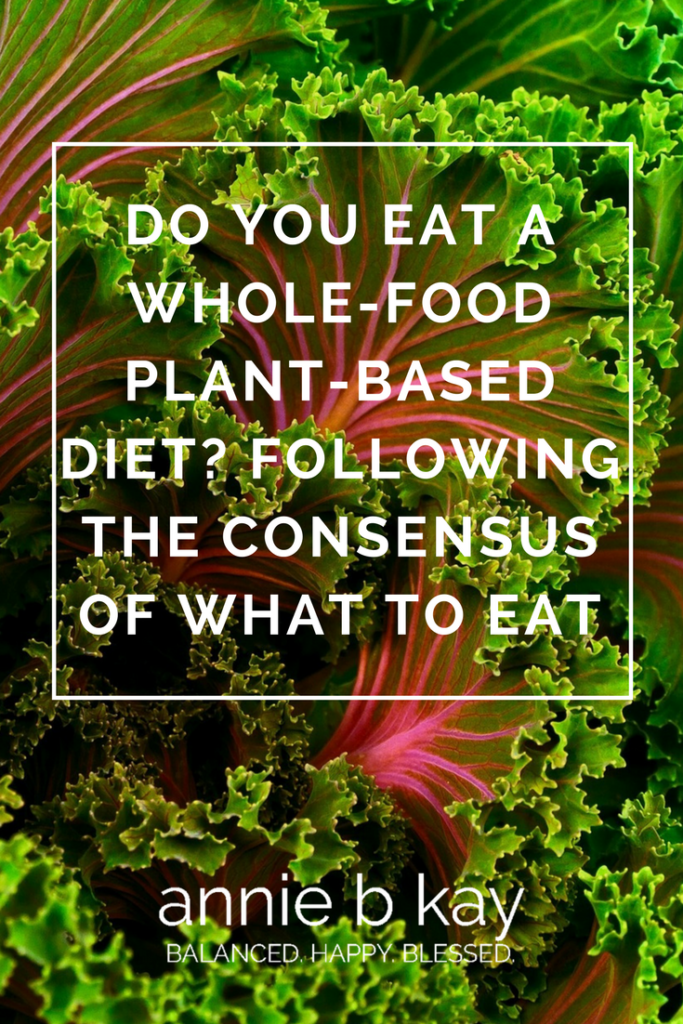
Do You Eat a Whole-Food Plant-Based Diet? Following the Consensus of What to Eat

So, you’ve heard that the Mediterranean diet is healthy. You have a friend who lost big-time weight following Paleo. Or maybe South Beach Diet, or Eat Right for Your Type, or Ayurveda have peaked your interest.
All of these diets, if followed in their healthiest version, have whole food plant-based eating at their core. All of these diets kick processed foods to the curb. All of these diets are built around plants. All of these diets, at their best, speak to food quality.
So, just what is a whole food, plant-based diet?
Let’s begin with the plant piece. The Centers for Disease Control (CDC) do a good job of defining a plant-based diet. Remember 5-a-day? That was a program that was around for decades, promoting fruits and veggies, and suggesting we eat 5 servings daily. The website used to be www.5ada.gov. Well, the website is now www.fruitsandveggiesmorematters.org. That’s because the CDC has boosted its recommendation to 9-13 servings for most adults. What’s a serving? About a half-cup, or a tennis-ball sized serving (for salad greens, a serving is one cup).
If that recommendation gives you gas just thinking about it, well, breathe and send relaxing love into your nervous belly!
All you need to do, and the only question that really matters for you, is where are you now (how many servings do you take) and how can you increase that by one or two servings? The CDC’s long-winded website has lots of good and simple ideas.
Envisioning that pile of tennis balls made up of fruits and veggies eaten through the day will give you the picture of what a plant-based diet looks like.
OK. How about whole food?
Whole food has minimal processing from the earth to your plate. Generally, the more someone does for you between those two points, the more refined a food is. And generally, the more refined a food, the more calorically dense, nutrient devoid, low fiber, and of poor nutrition quality it is.
The food industry is beginning to change, and I am seeing an increase in packaged foods that are more healthful. But packaged foods remain confusing, and overall, process foods remain less than whole counterparts. For me, it’s a matter of trust – big food, while it is changing, still puts profits first, nutrition second – I don’t think that has changed. So I tend to be wary.
How do you identify processed food? Boxes. Wrappers. Plastic. Labels. You’ll find whole foods in the produce section, the meat and fish sections, and the dairy section of your grocery store. With so much of our food handled for us, getting to 100% whole is probably not necessary. Remember, the goal is to minimize unhealthful chemicals and retain the natural nutrition of your food to support your health.
Be well.
Learn More:



